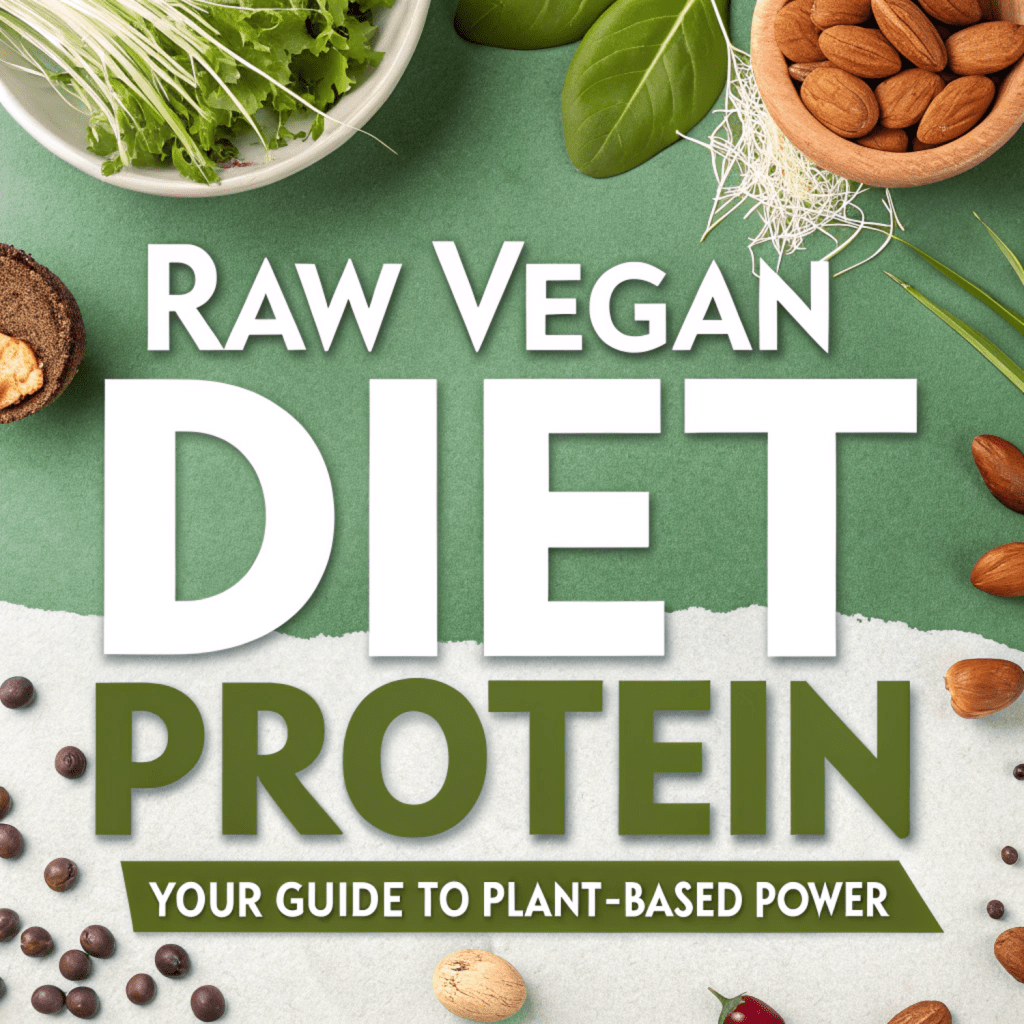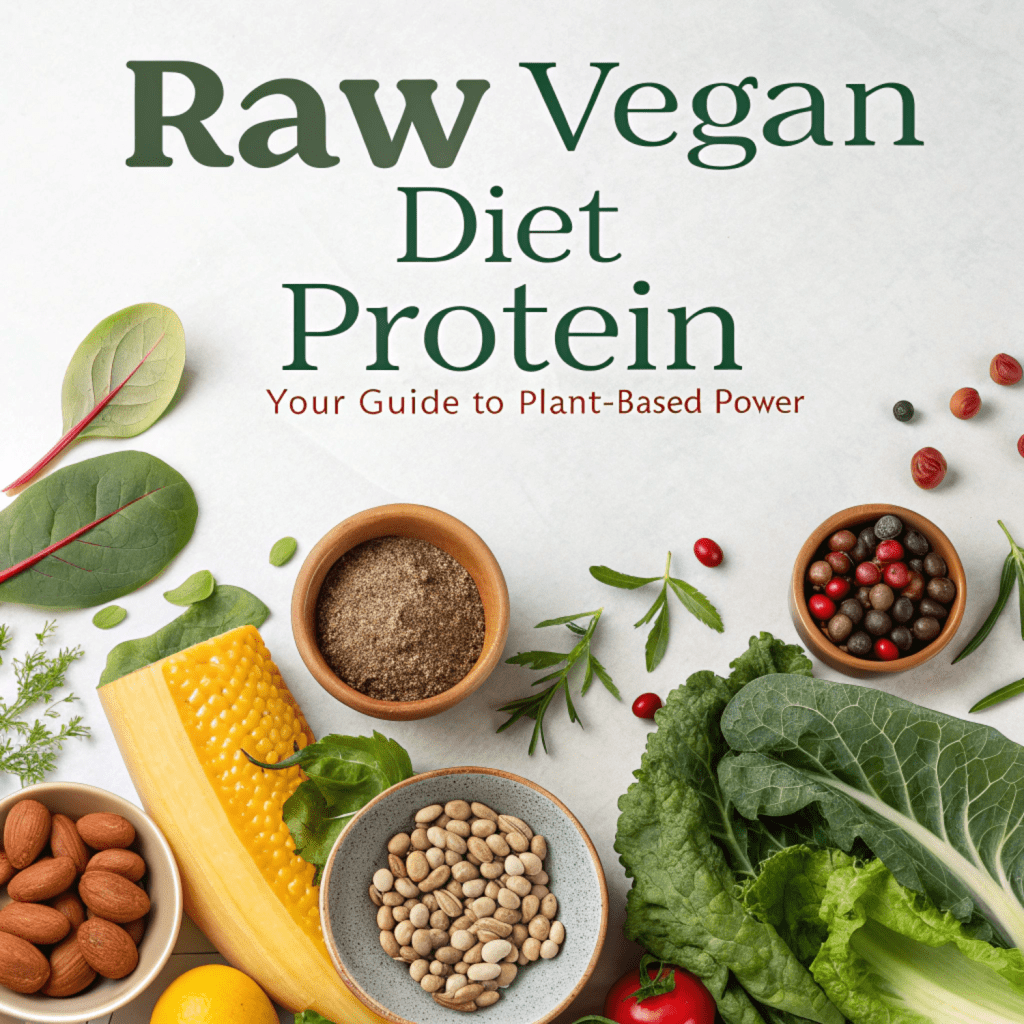
Raw vegan diet protein fuels a vibrant, plant-based lifestyle with nutrient-dense foods. This guide explores how to source protein on a raw vegan diet, its origins, nutritional benefits, and practical ways to incorporate it into your life.
What Is a Raw Vegan Diet?
A raw vegan diet consists of unprocessed, plant-based foods consumed in their natural state, typically not heated above 118°F (48°C). This preserves enzymes, vitamins, and minerals. Protein in this diet comes from raw fruits, vegetables, nuts, seeds, and sprouted grains or legumes, offering a clean, sustainable way to meet nutritional needs.
Origins of the Raw Vegan Diet
The raw vegan diet traces back to early 20th-century health movements. Pioneers like Herbert M. Shelton and Ann Wigmore championed raw foods for their vitality. Shelton, a naturopath, promoted natural hygiene in the 1940s, emphasizing unprocessed plant foods. Wigmore, founder of the Hippocrates Health Institute, popularized raw veganism in the 1960s, focusing on wheatgrass and sprouts for healing. These roots shaped the modern raw vegan movement, driven by health, ethics, and environmental concerns.
Why Focus on Raw Vegan Diet Protein?
Protein is essential for muscle repair, immune function, and energy. Many assume a raw vegan diet lacks sufficient protein, but plant-based sources provide ample amounts when planned thoughtfully. Unlike cooked foods, raw options retain enzymes and nutrients, supporting digestion and overall wellness.
Nutritional Value of Raw Vegan Protein Sources
Raw vegan protein sources are nutrient powerhouses. Here’s a breakdown of key options:
- Nuts and Seeds: Almonds, walnuts, chia seeds, hemp seeds, and flaxseeds deliver 15-30 grams of protein per 100 grams. They’re rich in healthy fats, fiber, and micronutrients like magnesium and zinc.
- Sprouted Legumes: Sprouted lentils, mung beans, and chickpeas offer 7-10 grams of protein per 100 grams. Sprouting boosts digestibility and nutrient absorption.
- Leafy Greens: Spinach, kale, and broccoli provide 2-5 grams of protein per 100 grams, alongside vitamins A, C, and K.
- Fruits: Avocados and bananas contribute small amounts of protein (1-2 grams per 100 grams) while offering potassium and healthy fats.
- Spirulina and Chlorella: These algae pack 50-70 grams of protein per 100 grams, plus iron, B vitamins, and antioxidants.
Raw vegan proteins are complete or complementary, meaning they supply all essential amino acids when varied. They’re low in saturated fats, cholesterol-free, and high in fiber, supporting heart health and digestion.
Benefits of Raw Vegan Diet Protein
Incorporating raw vegan protein offers multiple benefits:
- Enhanced Nutrient Absorption: Raw foods retain enzymes that aid digestion, ensuring better nutrient uptake.
- Anti-Inflammatory Properties: Plant-based proteins reduce inflammation, unlike some animal proteins linked to chronic diseases.
- Sustainable and Ethical: Raw vegan diets lower environmental impact and align with cruelty-free values.
- Weight Management: High-fiber, low-calorie protein sources promote satiety and healthy weight.
- Energy Boost: Nutrient-dense foods provide steady energy without the crash of processed meals.

How to Source Raw Vegan Diet Protein
Building a protein-rich raw vegan diet requires variety and planning. Here’s how to do it:
1. Incorporate Nuts and Seeds
Nuts and seeds are protein staples. Add them to smoothies, salads, or raw energy balls. Soak almonds or sunflower seeds overnight to enhance digestibility. Hemp seeds, with 10 grams of protein per ounce, are perfect for sprinkling over dishes.
2. Embrace Sprouting
Sprouting grains and legumes unlocks protein and nutrients. Soak mung beans or lentils for 8-12 hours, then rinse and drain twice daily until sprouts appear (2-5 days). Add sprouts to wraps or salads for a protein-packed crunch.
3. Load Up on Greens
Leafy greens like kale and spinach boost protein intake. Blend them into smoothies or make raw wraps with collard leaves. A cup of spinach provides 5 grams of protein, making it a versatile base.
4. Use Superfoods
Spirulina and chlorella are protein-dense superfoods. Add a teaspoon to smoothies or raw dressings for a nutrient boost. Their high protein content makes them ideal for meeting daily needs.
5. Experiment with Raw Vegan Recipes
Try these protein-rich recipes to keep meals exciting:
Raw Vegan Protein Smoothie
- Ingredients: 1 banana, 1 cup spinach, 1 tbsp hemp seeds, 1 tsp spirulina, 1 cup almond milk.
- Instructions: Blend until smooth. Enjoy as a breakfast or post-workout boost (15 grams protein).
Sprouted Lentil Salad
- Ingredients: 1 cup sprouted lentils, ½ cup diced cucumber, ½ cup cherry tomatoes, 1 tbsp chia seeds, lemon juice, olive oil.
- Instructions: Toss ingredients with lemon juice and olive oil. Serve fresh (12 grams protein).
Raw Almond Energy Balls
- Ingredients: 1 cup soaked almonds, ½ cup dates, 2 tbsp chia seeds, 1 tbsp cacao powder.
- Instructions: Blend, roll into balls, and chill for 1 hour (8 grams protein per serving).
6. Plan Balanced Meals
Aim for 0.8-1.2 grams of protein per kilogram of body weight daily, depending on activity level. A 150-pound (68 kg) person needs 54-82 grams. Combine sources like nuts, seeds, and greens to meet this goal. Use a food journal or app to track intake initially.
Challenges and Solutions
Challenge 1: Meeting Protein Needs
Some worry about getting enough protein. Solution: Diversify sources and eat larger portions of protein-rich foods like hemp seeds or sprouted legumes. A varied diet ensures all amino acids are covered.
Challenge 2: Digestive Issues
Raw foods can be hard to digest initially. Solution: Start with small portions, chew thoroughly, and soak nuts and seeds to reduce phytic acid, improving absorption.
Challenge 3: Time-Consuming Prep
Sprouting and meal prep take time. Solution: Batch-prep sprouts weekly and keep pre-soaked nuts in the fridge for quick use.
Challenge 4: Nutrient Deficiencies
Vitamin B12 and omega-3s may be low in raw vegan diets. Solution: Supplement with B12 and include flaxseeds or algae-based omega-3 sources.
Sample Meal Plan for Raw Vegan Diet Protein
Here’s a day of protein-rich raw vegan meals:
- Breakfast: Smoothie with 1 banana, 1 cup kale, 2 tbsp hemp seeds, 1 tsp spirulina, 1 cup almond milk (18 grams protein).
- Snack: ¼ cup soaked almonds (7 grams protein).
- Lunch: Sprouted lentil salad with cucumber, tomatoes, and chia seeds (12 grams protein).
- Snack: Raw energy balls with almonds and chia (8 grams protein).
- Dinner: Collard wrap with avocado, sprouted mung beans, and sunflower seeds (15 grams protein).
Total: ~60 grams protein, suitable for an average adult.
Environmental and Ethical Impact
Raw vegan diets reduce reliance on animal agriculture, cutting greenhouse gas emissions and water use. They align with ethical values, avoiding harm to animals. Choosing organic, locally sourced produce further lowers your ecological footprint.
Who Should Try a Raw Vegan Diet?
This diet suits those seeking vibrant health, ethical eating, or environmental sustainability. Athletes, health enthusiasts, and those with digestive issues often thrive on raw vegan protein. Consult a doctor before starting, especially if you have medical conditions or are pregnant.
Tips for Success
- Start Gradually: Transition slowly to avoid digestive discomfort.
- Invest in Tools: A high-speed blender and dehydrator simplify raw meal prep.
- Stay Hydrated: Raw foods are water-rich, but drink plenty to support digestion.
- Educate Yourself: Read books like Becoming Raw by Brenda Davis for deeper insights.
- Join Communities: Connect with raw vegan groups online or locally for support.
Common Myths About Raw Vegan Diet Protein
Myth 1: You Can’t Get Enough Protein
Fact: A varied raw vegan diet easily meets protein needs with nuts, seeds, and sprouts.
Myth 2: Plant Proteins Are Incomplete
Fact: Combining sources like legumes and seeds provides all essential amino acids.
Myth 3: Raw Diets Are Expensive
Fact: Staples like lentils, spinach, and bananas are affordable. Buy in bulk to save.
Raw vegan diet protein offers a sustainable, nutrient-rich way to fuel your body. From its historical roots to modern applications, this approach delivers health benefits, ethical alignment, and environmental impact. By incorporating nuts, seeds, sprouts, and superfoods, you can meet protein needs while enjoying vibrant meals. Start small, experiment with recipes, and embrace the power of raw vegan living.

